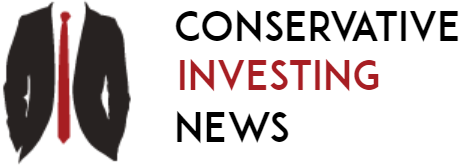US stocks plunged following Wednesday’s record surge as investors parsed an uncertain outlook for the global economy — despite President Trump’s surprise announcement of a 90-day pause on most tariffs.
The Dow Jones Industrial Average plummeted 1,014.79 points, or 2.5%, to close at 39,593.66. It recovered some losses from earlier on Thursday, when it had erased more than half of the 2,962.86 gain it posted on Wednesday – its largest single-day point gain in history.
The S&P 500 and the Nasdaq fell 3.5% and 4.3%, respectively, as markets took in the latest tariff stance – including Trump’s move to keep a 10% tax on most countries, halt higher rates and slap China with a staggering 125% levy.
While Trump on Wednesday paused the punishing “reciprocal” tariffs that had threatened a global trade war, he still left 10% levies in place worldwide, even as he escalated a tit-for-tat tariff war with China. Traders are now eyeing the chances of a recession at around 50-50, according to market participants.
“Market volatility could remain elevated, despite the 90-day pause on tariffs for non-retaliating countries,” Jeffrey Roach, chief economist at LPL Financial, said in a note. “Hard data from the early part of the year suggests the economy is slowing, irrespective of trade policy.”
Trump’s 90-day pause was a welcome reprieve for Wall Street, leading major stock indexes to notch several records on Wednesday.
The S&P 500 roared back more than 9% for its third-largest single day gain since World War II, and the Nasdaq Composite recorded its second-best day ever.
On Thursday, the European Union announced its own 90-day pause on retaliatory efforts against the US, helping to further ease tensions.
But investors remained hesitant about the latest trade policy. Though a 10% across-the-board tax is much lower than the previously proposed tariffs on many nations – like a 46% rate on Vietnam – it could still raise prices and dampen economic growth in the US.
Market losses accelerated after the White House confirmed that the new 125% tariff on China would be stacked on top of a prior levy, totaling 145%.
“I think the volatility is completely due to uncertainty. When economists can’t figure out what’s going on with President Trump’s tariff policy, then the business community can’t either. The worst thing for markets is uncertainty,” Mark Weinstock, associate professor of economics at Pace University, told The Post.
Weinstock said that Trump reversed himself and paused tariffs due to the bond market’s reaction. He suggested that the president reverse his position when it comes to key allies.
“It would be wise to reduce the intensity of tariffs against our major trading partners—Canada, Mexico, the EU, Australia, Japan and South Korea,” Weinstock said.
Trump told reporters at the White House that his stark reversal, after previously discarding rumors of a 90-day pause, was due to “yippy” critics and a “queasy” bond market.
“I thought people were jumping a little bit out of line, they were getting yippy, you know, they were getting a little bit yippy, a little bit afraid, unlike these champions,” he said.
Ken Mahoney, chief executive of Mahoney Asset Management, said some market volatility had been expected, especially looking back at Trump’s first term and the start of his trade war with China.
“We knew this could be the case, but the…historic volatility of this level was not exactly on the bingo card,” Mahoney told The Post. “We are feeling the relief from Trump changing course, but we are not out of the woods yet as we see it. We need more stabilization,” he cautioned.
